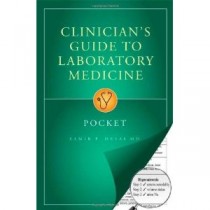It can be challenging to make a diagnosis of acute pulmonary embolism (PE). Research has consistently shown that the clinical manifestations of PE are common in patients without PE. Additional diagnostic testing is warranted if PE is a consideration. In recent years, the D–dimer test has played an important role in the evaluation of suspected PE. Although the test is widely utilized, errors have been reported with its use, including missed diagnoses. “Emergency physicians should receive adequate education concerning the correct use and limitations of a D-dimer test, to avoid error in its use in clinical practice,” writes Dr. Davide Imberti, Head of the Thrombosis Center in the Hospital of Piacenza Emergency Department (Imberti).
Key points to understand about D-dimer testing include the following:
- The test has a high negative predictive value, making it useful in excluding PE.
- The test should always be interpreted in the context of the patient’s clinical probability for PE. A number of scoring systems are available for assessment of clinical probability. PE can be excluded with a high degree of certainty if the D-dimer test result is negative in a patient with low clinical probability. This practice is endorsed by specialty organizations yet the evidence indicates that we do not always follow these guidelines. In one study of emergency medicine physicians, 7% of patients with low clinical probability and negative D-dimer underwent further evaluation for PE with CT (Corwin).
- Can D-dimer values be negative in the presence of thrombosis? False-negative test results can occur for a variety of reasons, including poor test sensitivity, longer duration of symptoms (> 7 – 10 days), and initiation of antithrombotic therapy.
- The D-dimer test alone should not be used to confirm PE diagnosis. High values can occur in the absence of thrombosis. Recent surgery, malignancy, and hospitalization are just a few of the many causes of D-dimer elevation.
- In patients with high values, further evaluation for PE is recommended unless another cause for D-dimer elevation is apparent. In the aforementioned study of EM physicians, 42% of patients with a positive D-dimer test did not undergo CT. In a significant percentage of these patients, researchers were unable to find another explanation for the elevated value.
- Not all D-dimer tests are created equal, and you should become familiar with the test method in place at your institution. Quantitative ELISA or semi-quantitative latex agglutination methods are preferred.
By Dr. Samir Desai, author of the Clinician’s Guide to Laboratory Medicine: Pocket

References
- Imberti D. D-dimer testing: advantages and limitations in emergency medicine for managing acute venous thromboembolism. Intern Emerg Med 2007; 2 (1): 70-1.
- Corwin MT, Donohoo JH, Partridge R, Egglin TK, Mayo-Smith WW. Do emergency physicians use serum D-dimer effectively to determine the need for CT when evaluating patients for pulmonary embolism? Review of 5,344 consecutive patients. AJR Am J Roentgenol 2009; 192 (5): 1319-23.


Leave a Reply